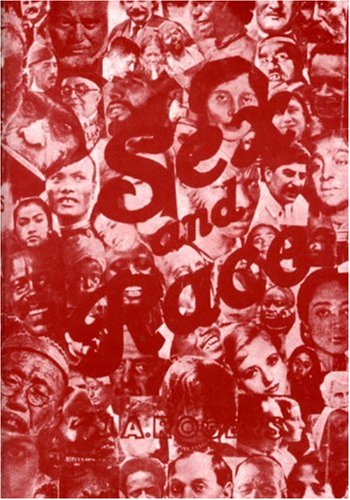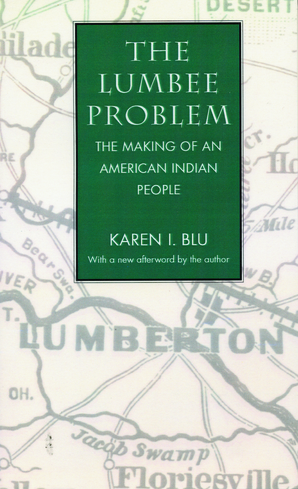Sex and Race, Volume I: Negro-Caucasian Mixing in All Ages and All Lands: The Old World
J. A. Rogers (1880-1966)
Helga Rogers
1941 (Ninth Edition, 1967)
302 pages
ISBN-13: 978-0960229406; ISBN 10: 096022940X

Table of Contents
- I. RACE TODAY
- II. WHICH IS THE OLDEST RACE?
- III. THE MIXING OF BLACK AND WHITE IN THE ANCIENT EAST
- IV. BLACK AND WHITE IN SYRIA, PALESTINE, ARABIA, PERSIA
- V. WHO WERE THE FIRST INHABITANTS OF INDIA?
- VI. WHO WERE THE FIRST CHINESE?
- VII. THE NEGRO IN ANCIENT GREECE
- VIII. NEGROES IN ANCIENT ROME AND CARTHAGE
- IX. WERE THE JEWS ORIGINALLY NEGROES?
- X. RACE-MIXING UNDER ISLAM
- XI. RACE-MIXING UNDER ISLAM (Cont’d)
- XII. MIXING OF WHITE AND BLACK IN AFRICA SOUTH OF THE SAHARA
- XIII. MISCEGENATION IN SOUTH AFRICA
- XIV. RACE-MIXING IN AFRICA AND ASIA TODAY
- XV. MISCEGENATION IN SPAIN. PORTUGAL, AND ITALY
- XVI. MISCEGENATION IN HOLLAND, BELGIUM, AUSTRIA, POLAND, RUSSIA
- XVII. NEGRO-WHITE MIXING IN GERMANY, ANCIENT AND MODERN
- XVIII. THE MIXING OF WHITES AND BLACKS IN THE BRITISH ISLES
- XIX. MISCEGENATION IN FRANCE
- XX. ISABEAU, BLACK VENUS OF THE REIGN OF LOUIS XV
- XXI. THE BLACK NUN–MULATTO DAUGHTER OF MARIA THERESA, QUEEN OF FRANCE
- XXII. BAUDELAIRE AND JEANNE DUVAL
- APPENDICES
- Race-mixing in European Literature
- Did the Negro Originate in Africa or Asia?
- Black Gods and Messiahs
- History of the Black Madonnas
- Notes and References to the Negro under Islam
- List of the Illustrations and Notes on Them
Chapter One: RACE TODAY
“A Charm of Powerful Trouble”
The conception of races once so innocent,” said Jean Finot, “has cast a veil of tragedy over the earth. From without it shows us humanity divided into unequal fractions… From within this same falsely conceived science of races likewise encourages hatred and discord among the children of the same common country . . . People against people, race against race . . . persecution and extermination on every hand.”
One writer has called it a Frankenstein monster. But that comparison is far too feeble. However, it has this point of resemblance: Frankenstein’s monster was built of scraps—scraps of corpses, a hand from this one, an eye from that, a patch of skin from this other. The evil genie of race it also created from scraps—scraps of false philosophies of past centuries; a quotation from this or that prejudiced traveller; lines from this and that semi-ignorant divine of colonial days; excerpts from Gobineau, Thomas Jefferson, Abraham Lincoln, the Bible; passages from this or that badly mixed-up ethnologist, all jumbled together with catch-phrases from greedy plantation owners, slave-dealers, and other traffickers in human flesh.
The purpose was to create a “pure” race, a “superior” race, a race that like the philosopher’s stone of the ancients, excelled all excellence—a race so meritorious that it had the right to enslave and use the rest of humanity.
Every newly discovered bit of anthropology was twisted into building this doctrine of a “superior” race. A Putnam Weale worked most industriously on this part of it; a Tom Dixon, Madison Grant, and Lothrop Stoddard on that; a William McDougall and a Frederick Hoffman busied themselves with that other, while a host of Southern politicians and other lesser fry assisted…
…As for the mixed-blood, he ought never to have been. No amount of Christianity or religious training, we are informed, will give him good heredity, and this as late as 1935 by no less an authority than the learned Victoria Society of London, England. In short, the mixed-blood is a creation of Satan. “God made the white man and God made the black man” said Colonial America, “but the Devil made the mulatto.”
The white race flowed from “a pure source”: Europe. Miscegenation with blacks there was unknown throughout the ages, we are told. “It was not until the discovery of the New World that the races of men strikingly different in appearance came to intermix,” says Crawfurd. Before that, he says, inferior races did mix with superior races, but both were white.
Nothing, however, is further from the truth. We shall show in these pages that sex relations between so-called whites and blacks go back to prehistoric times and on all the continents. Furthermore, since it is held by many that it is only the mixing of the black man and the white woman that can affect the “purity of the race” that it is precisely this kind that happened most in Europe…
Read the entire book here.




